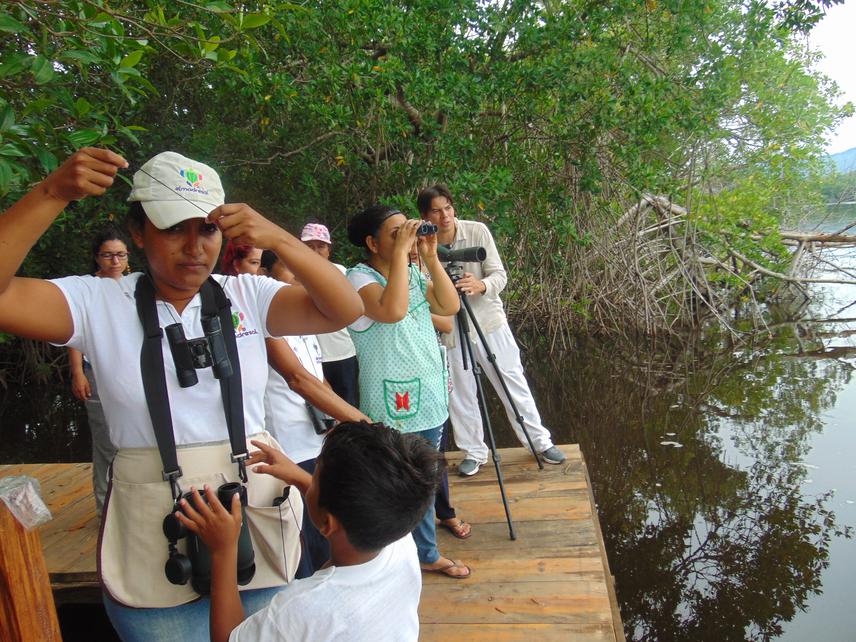Mireya Carrillo Garcia
Estimate the richness, abundance and diversity of birds I will carry on an avian monitoring with community monitors in the wetlands inside the Santuario Playa Puerto Arista Natural Protected Area, Ramsar site. This data could help to make decisions about management, conservation of birds and the wetlands which they inhabit.
Reinforce the community capacities to bird identification and environmental interpretation for avitourism trough participative workshops with community groups; and to allow local people to reevaluate their wetlands and to enhance consciousness about the importance of them as habitat of migratory and resident birds. So they could change their extractive activities to others less destructive like ecotourism, avitourism and environmental monitoring in these sites.

This research is about diversity of wetland birds in a Coastal Lagoon La Joya Buena Vista, Ramsar site in Chiapas, Mexico. Twelve months of community bird monitoring will be completed. Alfa and beta analysis of diversity will be done between sites. This data could help to make decisions about management, conservation of birds and the wetlands which inhabit Playa Puerto Arista, Natural Protected Area.
Participative workshops will be done in order to reinforce the bird identification skills, conservation consciousness, and information for environmental interpretation of local people. This could allow local people to reevaluate their wetlands and to enhance consciousness about the importance of them as habitat of migratory and resident birds. So they could change their extractive activities to others less destructive like ecotourism, avitourism and environmental monitoring in these sites.
The interdisciplinary approach of this project allow to obtain biological benefits as the diversity analysis, social benefits as increase local people capacities to identify birds and to give environmental interpretation, conservation benefits due to consciousness and to alternative activities like avitourism.
These wetlands belongs to two Important Bird Areas (IBA’s) [Istmo de Tehuantepec-Mar Muerto and La Encrucijada] and an Endemism Area [Pacific slope of Northern Central America]. These wetlands are habitat of at least 238 bird species, from which, 24 species are in a risk category in Mexico (NOM-059) for example Muscovy Duck (Cairina moschata) at risk of extinction; and two internationally protected by IUCN, as Reddish Egret (Egretta rufescens) and Yellow-naped Parrot (Amazona auropalliata). Five species are endemic, as West Mexican Chachalaca (Ortalis poliocephala), Giant wren (Campylorhynchus chiapensis), and cuasiendemic birds as White- bellied Chachalaca (Ortalis leucogastra), Russet-crowned Motmot (Momotus mexicanus), Yellow-winged cacique (Cassiculus melanicterus) and Pacific Screech-Owl (Megascops cooperi). Many colonial birds nest in their mangroves and many other migratory birds rest and eat inside.
These wetlands are considered one of the most important corridors in the world for migratory birds, serves resident and migratory birds as refuge, alimentation, rest or reproduction sites, because there are no larger wetlands to the west; they are also a very important bottleneck especially for daytime migratory birds.